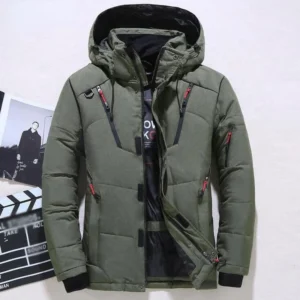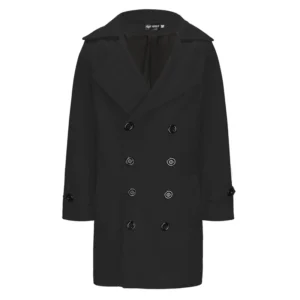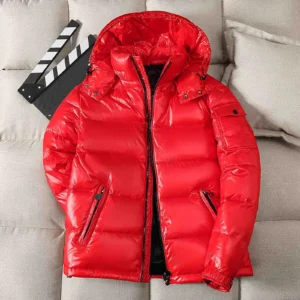The Science Behind Cashmere’s Exceptional Warmth
Cashmere is not just another luxury fabric—it’s nature’s perfect answer to cold weather. This premium material comes from the soft undercoat of the Cashmere goat, primarily found in the harsh, cold environments of Mongolia, China, and the Himalayan regions. These goats develop an incredibly fine, insulating layer to survive extreme temperature fluctuations, which becomes the cashmere we covet.
What makes cashmere truly exceptional for warmth is its unique fiber structure. Cashmere fibers measure just 14-19 microns in diameter—significantly finer than regular wool (20-40 microns) and even human hair (50-100 microns). This extraordinary fineness creates a much denser fabric with more fibers per square inch.
The natural crimp and structure of cashmere fibers create thousands of tiny air pockets throughout the material. These microscopic air chambers trap body heat with remarkable efficiency, creating an insulating barrier between you and the cold outside air. This explains why cashmere feels so lightweight yet provides such substantial warmth.
Most impressively, cashmere offers 3-8 times more insulating power than regular sheep’s wool without the extra weight or bulk. This exceptional warmth-to-weight ratio is what distinguishes choosing perfect cashmere overcoat from other winter options—you stay exceptionally warm without feeling weighed down or restricted.
How Warm is 100% Cashmere Compared to Other Coat Materials?
When evaluating winter coat options, understanding how different materials perform is essential. Here’s how 100% cashmere measures up against other premium coat materials:
| Material | Warmth Rating | Weight | Breathability | Best For |
|---|---|---|---|---|
| 100% Cashmere | Excellent | Very Light | Excellent | Dry cold, moderate to severe cold |
| Merino Wool | Very Good | Light-Medium | Very Good | Versatile conditions, light moisture |
| Down | Superior | Ultra-Light | Poor | Extreme dry cold |
| Synthetic Insulation | Good | Light | Good | Wet, active conditions |
| Alpaca | Excellent | Medium | Good | Very cold, dry conditions |
| Regular Wool | Good | Heavy | Moderate | Everyday winter weather |
Cashmere outperforms merino wool in both warmth and softness while maintaining a lighter weight. The natural crimp of cashmere fibers creates more effective insulating air pockets compared to merino’s straighter fibers.
When compared to down, cashmere provides less absolute warmth in extremely cold conditions, but offers significantly better breathability. Down excels in dry, frigid environments but loses insulating properties when wet—a limitation cashmere doesn’t share to the same degree.
Synthetic materials like polyester insulation offer better performance in wet conditions and typically cost less, but they can’t match cashmere’s combination of breathability, natural feel, and luxurious comfort. Many is 100 percent wool coat best winter garments provide good insulation, but cashmere’s exceptional softness and lightweight nature give it distinct advantages.
For those considering value versus warmth, understanding the is cashmere overcoat worth the investment requires weighing these comparative benefits. While cashmere comes at a premium price, its unparalleled comfort-to-warmth ratio makes it an exceptional choice for sophisticated winter wear.
Quality Factors That Affect Your Cashmere Coat’s Warmth
Not all cashmere coats provide equal warmth. Several important quality factors directly impact a cashmere coat’s insulating abilities:
• Cashmere Grade:
– Grade A: Features the finest, longest fibers (typically 34-36mm) providing superior insulation
– Grade B: Medium-length fibers (28-33mm) offering good but less consistent warmth
– Grade C: Shorter fibers (under 28mm) with reduced insulating properties and durability
• Ply Count:
– 1-ply: Single twisted yarn, lightest weight, suitable for mild conditions
– 2-ply: Two yarns twisted together, excellent balance of warmth and weight
– 3-ply: Three yarns twisted together, maximum warmth for severe cold
• Weave Density: Tighter weaves with more fibers per square inch trap more body heat while blocking cold air penetration. A high-quality cashmere coat will have minimal light showing when held up to a bright light source.
• Coat Construction: Design elements significantly impact warmth. Full-length coats provide better lower body protection, properly designed collars protect the neck, and quality closures prevent heat loss through gaps.
Understanding the differences between cashmere blend vs pure cashmere is crucial when evaluating warmth. Pure cashmere provides consistent insulation throughout the garment, while blends may have uneven thermal properties depending on the mix of materials.
The combination of these factors explains why two seemingly similar cashmere coats can perform quite differently in cold weather. A top-quality coat made from grade A, 2-ply or 3-ply cashmere with a tight weave will provide significantly more warmth than a looser-woven coat using lower grade fibers.
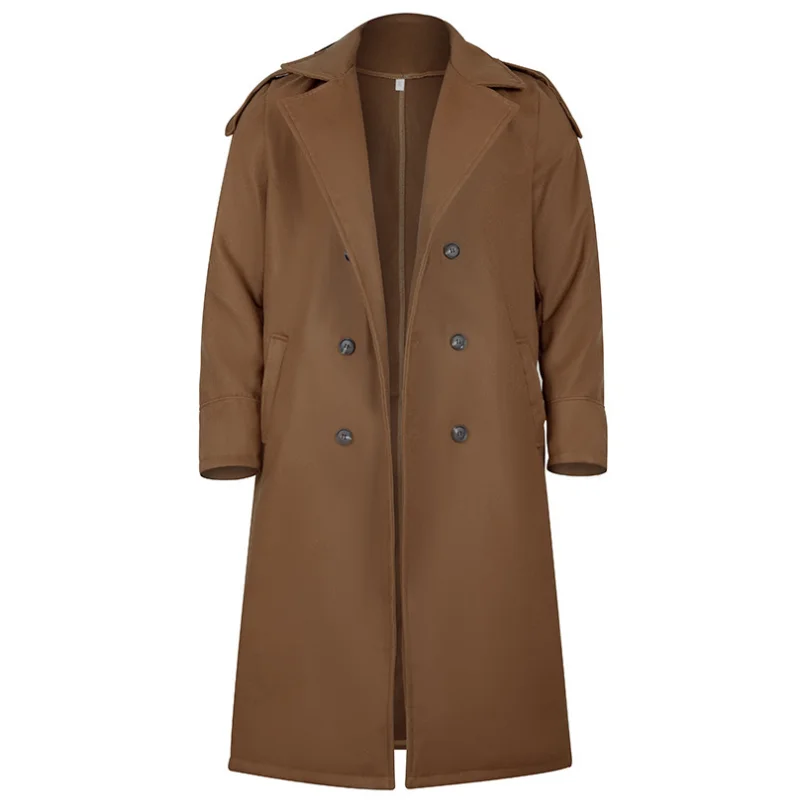
Beyond Warmth: Additional Benefits of 100% Cashmere Coats
Unmatched Softness
The microscopic scales on cashmere fibers are smoother and more flexible than other wools, creating a sensation against the skin that’s often described as “soft as butter.” This exceptional softness means your coat feels comfortable even when worn over light layers or directly against the neck.
Remarkable Lightness
Despite its superior warmth, cashmere weighs significantly less than comparable insulating materials. This lightweight quality eliminates the bulky, restrictive feeling of many winter coats, allowing for elegant draping and unrestricted movement.
Superior Breathability
Cashmere naturally regulates temperature by allowing excess heat and moisture to escape while still maintaining insulation. This breathability prevents overheating when moving between outdoor cold and heated indoor environments—a common winter comfort issue with less sophisticated materials.
Impressive Longevity
With proper care, a high-quality cashmere coat becomes a timeless investment cashmere overcoat that maintains its appearance and insulating properties for decades. Unlike synthetic materials that break down over time, cashmere can actually become softer with proper care while maintaining its structure.
Hypoallergenic Properties
Many people with wool sensitivities find they can comfortably wear cashmere. The absence of lanolin (a common allergen in regular wool) and the smooth fiber structure make it suitable for those with sensitive skin.
Elegant Drape
Cashmere naturally falls in a flattering way that creates a sophisticated silhouette. This inherent quality elevates the appearance of cashmere coats beyond mere functionality into the realm of refined style.
These additional benefits explain why cashmere coats remain coveted luxury items—they offer a comprehensive comfort experience that extends well beyond simple warmth.
Weather Conditions: When is a Cashmere Coat Most Effective?
A 100% cashmere coat performs optimally within specific temperature and weather parameters. Understanding these conditions helps ensure your cashmere investment provides maximum comfort:
Ideal Temperature Range: 25°F to 45°F (-4°C to 7°C) represents the sweet spot for cashmere coats. In this range, the natural insulation properties work most effectively without overheating.
Dry Cold Performance: Cashmere excels in dry, cold conditions where its natural air-trapping structure creates an insulating microclimate around your body. The absence of moisture allows the fibers to maintain their loft and insulating properties.
Humid Cold Considerations: While still effective in humid cold, cashmere can absorb some moisture from the air, which slightly reduces its insulating efficiency compared to perfectly dry conditions.
Wind Resistance: Tightly woven cashmere provides decent wind resistance, but in very windy conditions, consider layering with a windproof shell to maintain maximum warmth. The density of the weave significantly affects this property.
Precipitation Limitations: Light precipitation won’t immediately compromise cashmere’s warmth, but the material isn’t naturally water-resistant. In rainy or snowy conditions, a water-resistant overcoat or umbrella is advisable to protect your investment.
For extremely cold environments (below 20°F/-7°C), cashmere may need supplementation with additional layers or consideration of alternatives like puffer coat vs wool coat warmth options, which might provide better protection in severe conditions.
Choosing the Perfect 100% Cashmere Coat for Maximum Warmth
Verify True 100% Cashmere Content
Examine the label carefully—legitimate cashmere coats will clearly state “100% Cashmere” rather than vague terms like “cashmere blend” or “cashmere feel.” Reputable retailers like Metro Cloak provide detailed material information for their premium offerings.Assess Fiber Quality Through Touch
High-quality cashmere feels incredibly soft but not slippery. Run your hand across the fabric—superior cashmere creates a gentle warmth on your palm almost immediately due to its insulating properties. The surface should feel smooth with a subtle, natural luster rather than an artificial shine.Evaluate Weave Density
Hold the coat up to light—minimal light should penetrate a well-constructed cashmere coat. Denser weaves provide superior insulation by trapping more air and blocking wind. Gently pinch the fabric—it should feel substantial without being stiff.Check Ply Information
Look for indications of 2-ply or 3-ply construction for maximum warmth. This information may appear on tags or in product descriptions as “2-ply cashmere” or similar terminology.Consider Proper Fit For Layering
The ideal cashmere coat should allow comfortable movement while wearing a light sweater or suit jacket underneath. Too tight, and you’ll compress the insulating air pockets; too loose, and cold air will circulate inside.Examine Construction Details
Look for reinforced seams, quality lining (particularly at the shoulders and sleeves), and effective closures that prevent heat loss. A well-designed collar that can be turned up provides critical neck protection in cold conditions.
For the ultimate selection of premium options, browsing mens cashmere overcoat collections can provide excellent examples of quality construction and proper insulation design.
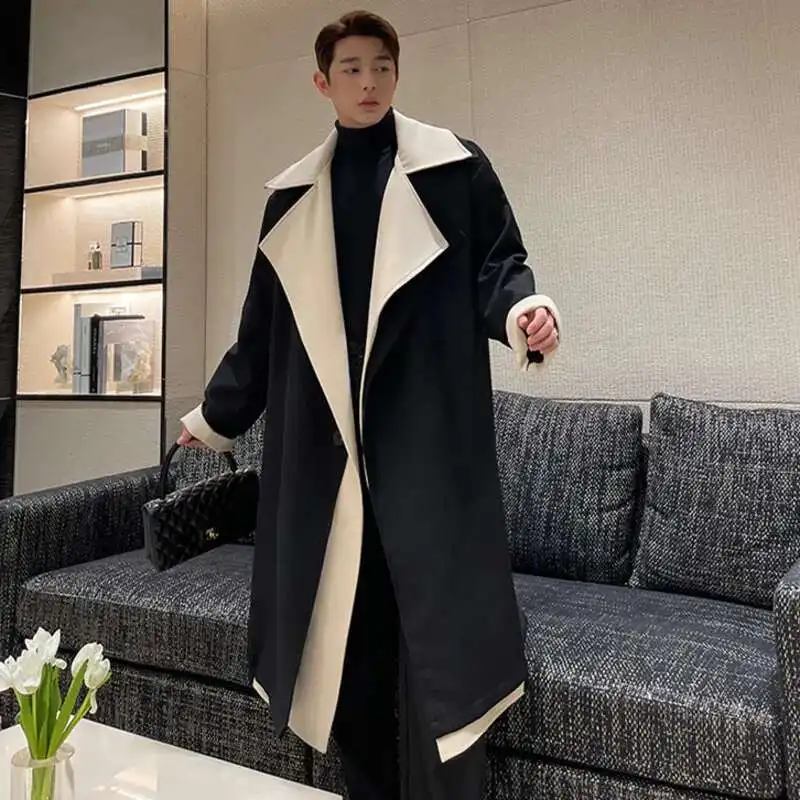
Layering Strategies: Maximizing Your Cashmere Coat’s Warmth
• Start With Proper Base Layers
Lightweight, close-fitting merino wool or silk base layers create a foundation of warmth without adding bulk. These materials work synergistically with cashmere by wicking moisture away from the body while adding minimal thickness.
• Mid-Layer Selection
Fine gauge merino or cashmere sweaters make ideal mid-layers under cashmere coats. Their complementary insulating properties enhance overall warmth while maintaining the coat’s elegant silhouette. Avoid bulky, chunky knits that compress the coat’s cashmere fibers.
• Strategic Accessorizing
A fine cashmere scarf tucked inside the coat collar creates an insulating seal around the neck area—a critical zone for heat loss. Leather gloves with cashmere lining maintain the sophisticated aesthetic while providing hand protection.
• Temperature-Specific Layering
For moderate cold (35-45°F/2-7°C): Lightweight shirt and thin sweater
For significant cold (20-35°F/-7-2°C): Base layer, light sweater, and vest
For severe cold (below 20°F/-7°C): Technical base layer, medium-weight sweater, and insulating vest
Understanding the mastering art layering under cashmere principles allows you to adjust your outfit precisely to weather conditions while maintaining your coat’s elegant appearance. The key is creating multiple thin, insulating layers rather than one thick layer, which maximizes warmth while preserving freedom of movement.
Care and Maintenance: Preserving Your Cashmere Coat’s Warmth
Proper care directly impacts your cashmere coat’s ability to retain its exceptional insulating properties over time:
Cleaning Protocol:
1. Limit cleaning to when truly necessary—cashmere naturally resists dirt and odors
2. Professional dry cleaning using cashmere-safe methods is recommended for full coats
3. Specify “pure cashmere care” to your cleaner to ensure appropriate handling
4. Allow 24 hours of air-out time after wearing before returning to storage
Storage Techniques:
1. Always clean before seasonal storage to prevent moth attraction
2. Use wide, shaped hangers to maintain shoulder structure
3. Store in breathable garment bags—never in plastic
4. Include cedar blocks or lavender sachets as natural moth deterrents
5. Ensure storage area is cool, dry, and away from direct sunlight
Pilling Management:
1. Gently remove pills using a cashmere comb or dedicated fabric shaver
2. Work in one direction with light pressure
3. Address pilling promptly to prevent fiber damage
Seasonal Care Schedule:
– Beginning of season: Light steaming to remove storage wrinkles
– Mid-season: Spot-clean as needed, brush with cashmere brush
– End of season: Professional cleaning before storage
Improper care—particularly incorrect washing or drying—can cause the cashmere fibers to felt or mat together, permanently diminishing their ability to trap insulating air. With proper maintenance, your cashmere coat will maintain its exceptional warmth properties for many years.
Mens Heavy Winter Coat, Mens Insulated Coat, Mens Parka Coat
Price range: $175.52 through $237.36 Select options This product has multiple variants. The options may be chosen on the product pageMens Big and Tall Winter Coats, Mens Down Coat, Mens Hooded Winter Coat, Mens Puffer Coat
Price range: $126.44 through $217.01 Select options This product has multiple variants. The options may be chosen on the product pageMens Big and Tall Winter Coats, Mens Hooded Winter Coat
Price range: $80.32 through $106.68 Select options This product has multiple variants. The options may be chosen on the product pageMens Double Breasted Pea Coat, Mens Wool Blend Coat, Mens Wool Pea Coat
Price range: $136.84 through $157.36 Select options This product has multiple variants. The options may be chosen on the product pageMens Cashmere Overcoat, Mens Hooded Winter Coat, Mens Wool Blend Coat
Price range: $128.72 through $139.68 Select options This product has multiple variants. The options may be chosen on the product pageMens Hooded Winter Coat, Mens Insulated Coat, Mens Puffer Coat, Mens Quilted Coat
Price range: $139.88 through $177.72 Select options This product has multiple variants. The options may be chosen on the product page
For those seeking different winter options, our mens wool overcoat collection offers excellent alternatives with different care requirements.
Are There Downsides to 100% Cashmere Coats in Cold Weather?
Water Vulnerability
While cashmere provides exceptional warmth in dry conditions, it absorbs moisture readily. When wet, the fibers lose much of their insulating ability and can take significant time to dry. For rainy or snowy climates, cashmere may require additional protection like a water-resistant overcoat.
Wind Consideration
Although tightly woven cashmere provides some wind resistance, it doesn’t match the windproofing of technical fabrics. In extremely windy conditions, cold air can penetrate the weave more easily than with specialized windproof materials.
Temperature Limitations
For extreme cold (below 15°F/-9°C), even the finest cashmere coat may need supplementation with technical layers. Arctic conditions generally exceed the natural insulating capacity of any non-specialized wool garment.
Practical Solution:
For severe weather conditions, layering a cashmere coat over appropriate technical garments provides both thermal protection and sophisticated appearance. Alternatively, exploring our mens winter coats collection reveals options specifically designed for extreme conditions.
When Cashmere Might Not Be Ideal:
– During heavy precipitation
– For outdoor activities generating significant perspiration
– In extremely harsh winter environments without proper layering
– When frequent exposure to rough conditions might damage the investment
Being realistic about these limitations ensures you make informed choices about when to wear your cashmere coat versus selecting alternative outerwear.
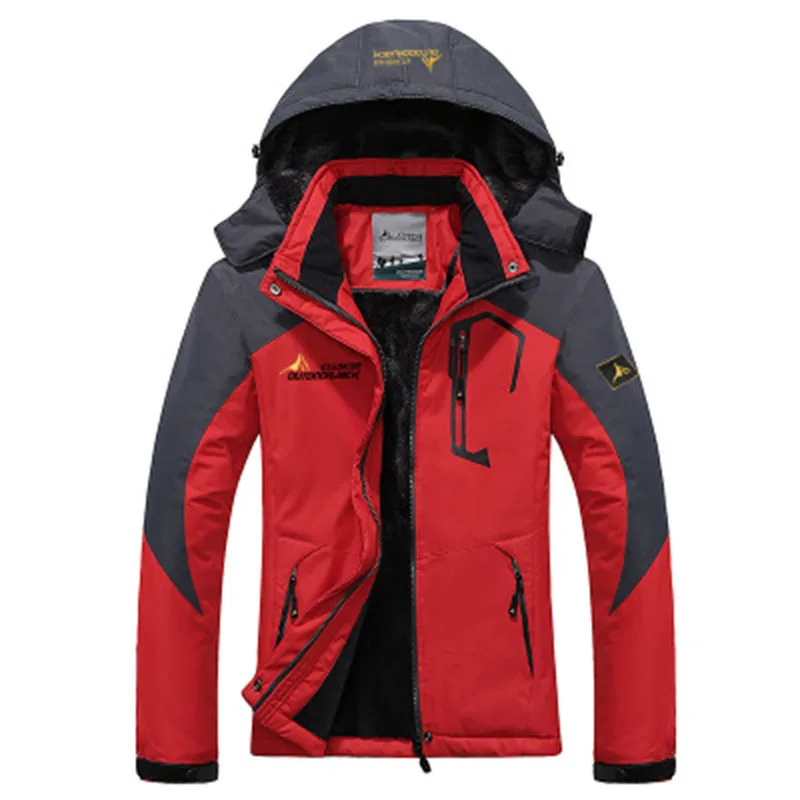
Is a 100% Cashmere Coat Worth the Investment for Winter Warmth?
When evaluating the considerable price of a quality cashmere coat against its warmth benefits, several factors justify the investment:
The exceptional durability of properly maintained cashmere significantly reduces the cost-per-wear over time. While synthetic coats might need replacement every few years, a premium cashmere coat can last decades—spreading the initial investment across many winters.
The unmatched comfort-to-warmth ratio provides daily benefits beyond simple temperature regulation. The lightweight insulation eliminates the restricted movement and fatigue associated with heavier winter coats.
Unlike trendy designs that quickly look outdated, cashmere coats maintain a timeless elegance that transcends fashion cycles. This classic quality ensures your investment remains stylish for years rather than a single season.
The versatility of cashmere allows appropriate wear across a wider temperature range than many specialized winter materials, making it suitable for more days of the year than extremely warm but bulky alternatives.
For those seeking quality winter outerwear at various price points, our mens overcoats collection offers options to suit different budgets and warmth requirements.
Ethical and Sustainable Aspects of Cashmere Production
Traditional cashmere harvesting involves combing the goats during their natural spring molting season—a non-harmful process that collects only the fine undercoat the animals naturally shed. However, increasing global demand has sometimes led to less sustainable practices.
Environmental considerations include grazing impact in sensitive regions. Cashmere goats have sharp hooves that can damage delicate grassland ecosystems when herds grow too large. This overgrazing contributes to desertification in some production regions.
Animal welfare varies significantly between producers. Responsible operations maintain appropriate herd sizes and ensure goats are combed rather than shorn, particularly in cold regions where premature removal of the protective coat could harm the animals.
When seeking ethical cashmere, look for certifications like the Sustainable Fibre Alliance (SFA) or Good Cashmere Standard, which verify sustainable herding practices and animal welfare standards.
Recycled cashmere offers an increasingly popular alternative that maintains most of the material’s warmth properties while reducing environmental impact. These garments repurpose existing cashmere fibers into new products.
For those prioritizing sustainability alongside warmth, our mens wool coats collection includes options with strong ecological credentials while still providing excellent insulation.



